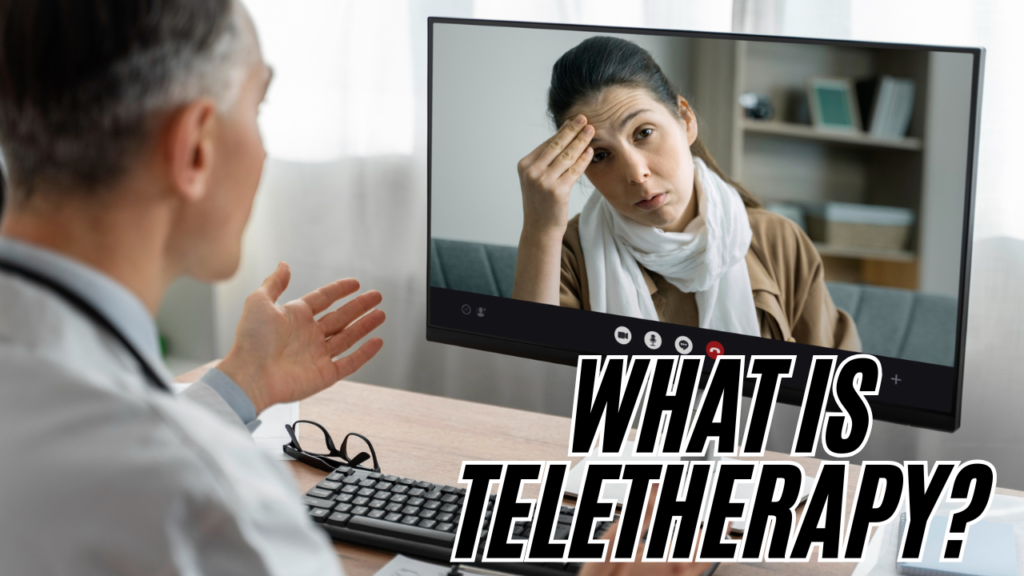In recent years, teletherapy has revolutionized mental health care, offering a convenient and accessible alternative to traditional in-person therapy. But what is teletherapy, and how does it work? This guide explores the ins and outs of online therapy, its benefits, limitations, and expert insights to help you decide if it’s the right choice for your mental health needs.
Table of Contents
ToggleWhat is Teletherapy?
Teletherapy (also called online therapy or telehealth therapy) is mental health treatment provided by licensed therapists through secure video calls, phone sessions, or messaging platforms. According to Psychology.org, teletherapy follows the same ethical and legal standards as in-person therapy, including HIPAA compliance to protect patient privacy.
Patients can engage in therapy from home, work, or any private space with an internet connection—making it ideal for those with busy schedules, mobility issues, or limited access to local therapists.
How Does Teletherapy Work?

Teletherapy sessions function similarly to traditional therapy but take place digitally. Here’s how it typically works:
Finding a Provider – Many platforms (like BetterHelp, Talkspace, or Amwell) connect users with licensed therapists. You can also find independent therapists offering virtual sessions.
Scheduling & Setup – Once matched with a therapist, you schedule sessions and receive a secure link for video calls (via Zoom, Doxy.me, or other HIPAA-compliant platforms).
The Session – You meet with your therapist in real-time, discussing concerns just as you would in person. Some therapists also offer text-based therapy for ongoing support.
Payment & Insurance – Many insurance plans now cover teletherapy, though coverage varies. Always check with your provider.
Is Teletherapy Effective?
Research suggests that teletherapy can be just as effective as in-person therapy for many conditions, including anxiety, depression, and PTSD. However, effectiveness depends on the individual and their comfort with technology.
Dr. Chloe Greenbaum, a licensed psychologist and NYU professor, notes that teletherapy removes barriers like transportation, childcare, or geographic limitations (Psychology.org). Yet, some clients—especially those with ADHD or screen fatigue—may struggle with virtual sessions.
Teletherapy vs. Traditional Therapy: Key Differences
| Feature | Teletherapy | In-Person Therapy |
|---|---|---|
| Accessibility | Available anywhere with internet | Requires travel to a clinic |
| Convenience | Flexible scheduling, no commute | Fixed location & time |
| Privacy | Must ensure a quiet space at home | Dedicated private office |
| Nonverbal Cues | Limited body language visibility | Full in-person interaction |
| Tech Requirements | Needs stable internet & device | No tech needed |
Benefits of Teletherapy
Greater Accessibility – Ideal for rural areas, people with disabilities, or those with tight schedules.
Convenience – No commuting; sessions can happen during lunch breaks or after work.
Safety – A great option during health crises (like COVID-19) or for immunocompromised individuals.
Affordability – Some platforms offer lower-cost options compared to traditional therapy.
Limitations of Teletherapy
Despite its advantages, teletherapy isn’t perfect. Some challenges include:
Technology Issues – Poor internet or device problems can disrupt sessions.
Lack of Personal Connection – Some clients find it harder to bond with a therapist virtually.
Privacy Concerns – Not everyone has a quiet, private space at home.
Not Suitable for All Conditions – Severe mental health crises may require in-person care.
Dr. Kyle Zrenchik, a couples therapist, notes that while teletherapy is helpful, “certain aspects of human connection simply can’t be replicated digitally” (Psychology.org).
Does Insurance Cover Teletherapy?
Since the COVID-19 pandemic, most major insurers now cover teletherapy similarly to in-person visits. However, coverage varies by provider and state, so always verify with your insurance company.
How to Get the Most Out of Teletherapy
To make your sessions effective:
✔ Choose a quiet, private space – Avoid distractions.
✔ Test your tech beforehand – Ensure your camera, mic, and internet work.
✔ Treat it like in-person therapy – Be present and engaged.
✔ Communicate with your therapist – If something isn’t working, let them know.
The Future of Teletherapy
Experts predict teletherapy is here to stay. Grace Dowd, LCSW, believes its flexibility will keep demand high, while Dr. Greenbaum emphasizes that insurance coverage will play a key role in its long-term adoption.
Final Thoughts
Teletherapy is a powerful tool for mental health care, offering accessibility and convenience without sacrificing quality. While it may not replace in-person therapy entirely, it provides a valuable option for those who need support but face barriers to traditional treatment.
If you’re considering teletherapy, explore reputable platforms or ask your current therapist if they offer virtual sessions. For more insights, check out Psychology.org’s full guide on teletherapy.

